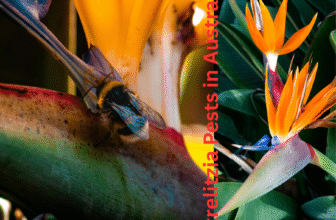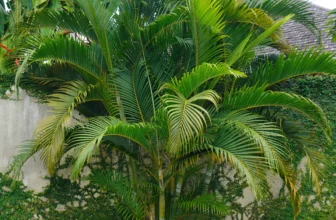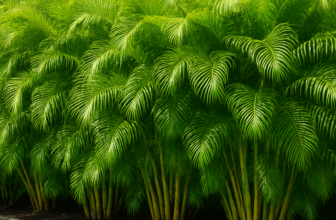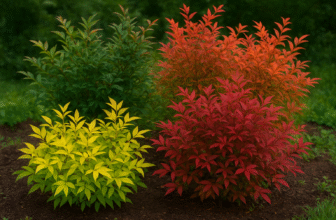Introduction:
How to install fake grass? seemed like a nightmare but by flowing Gardengreen’s guide the perfect solution for someone who loves a lush, green lawn but dreads the constant upkeep. Let me walk you through the process if you’re considering switching to artificial turf. Here’s how I install fake grass in my backyard and some tips and tricks I picked up along the way.
Gardengreen Mission is to facilitate you transforming your space into a more Natural and more Vibrant Environment!
Gardengreen.au
Planning and Preparation
Measure the Area
The first step in my installation journey was measuring the area where I wanted to install the fake grass. This helped me determine how much turf I needed to purchase. Measuring accurately and buying a little extra is important to account for any mistakes or irregularities.

Choose the Right Turf
There are various types of artificial grass available, each suited for different needs. I opted for a high-quality, UV-resistant turf that looked and felt realistic. Consider the pile height, colour, and density when choosing your grass.
Gather Your Materials
Here’s a list of materials and tools I used:
- Artificial grass
- Weed barrier fabric
- Gravel or crushed stone (for the base)
- Sand (for levelling)
- Landscaping spikes or nails
- Utility knife
- Shovel
- Rake
- Tape measure
- Compactor or tamper
- Garden hose
- Infill material (optional for added cushioning)
How to install fake grass, Steps
Step 1: Prepare the Ground
The first step was to prepare the ground. I started by removing the area’s existing grass, rocks, and debris. This involved some heavy lifting, but it’s a crucial step to ensure a smooth installation.
- Clear the Area: Remove all existing vegetation and debris.
- Excavate: Dig out the soil to a 2-3 inches depth. This will make space for the gravel base.
- Level the Ground: Use a rake to level the ground as much as possible. Smooth out any uneven areas.
Step 2: Install a Weed Barrier
I laid down a weed barrier fabric over the entire area to prevent weeds from growing through the artificial grass. This step is essential to keep your new lawn looking pristine.
- Lay the Fabric: Roll out the weed barrier fabric over the prepared ground.
- Secure the Edges: Use landscaping spikes or nails to secure the edges of the fabric.
Step 3: Add the Base Layer
A solid base layer ensures good drainage and a stable surface for the fake grass. I used gravel or crushed stone for this purpose.
- Spread the Gravel: Spread a gravel or crushed stone layer over the weed barrier fabric. Aim for a depth of about 2-3 inches.
- Compact the Base: Use a compactor or tamper to compact the gravel, creating a firm and level surface.
- Add Sand: Spread a thin layer of sand over the compacted gravel and use a rake to level it out.
Step 4: Lay the Artificial Grass
With the base prepared, it was time to lay the artificial grass. This part was exciting and nerve-wracking as the turf finally started taking shape.
- Roll Out the Turf: Roll out the artificial grass over the prepared base. Ensure the turf is laid out in the same direction to avoid noticeable seams.
- Trim to Fit: Use a utility knife to trim the edges of the turf to fit the area perfectly.
- Secure the Edges: Use landscaping spikes or nails to secure the edges of the turf. Place the spikes about 6-8 inches apart for a secure hold.
Step 5: Join the Seams
If you’re covering a large area, you’ll likely need to join multiple pieces of turf. I used seam tape and adhesive to ensure a seamless look.
- Align the Edges: Align the edges of the turf pieces carefully.
- Apply Seam Tape: Place seam tape under the edges where the turf pieces meet.
- Apply adhesive to the seam tape and press the turf edges together firmly.
Step 6: Add Infill (Optional)
Infill material, such as silica sand or rubber granules, can be added to the turf for added cushioning and to help the blades stand upright. This step is optional but recommended for a more natural feel.
- Spread the Infill: Use a spreader to distribute the infill material evenly over the turf.
- Brush the Turf: Use a stiff-bristled broom to brush the turf and help the infill settle between the blades.

Final Touches
After the turf was installed, I gave it a good rinse with a garden hose to help settle everything into place. I also went around and made sure all the edges were securely fastened and that the seams were invisible.
Enjoying My New Lawn
How to install fake grass? undoubtedly Installing fake grass turned out to be a rewarding DIY project. Now, my backyard looks lush and green all year round, and I don’t have to worry about mowing or watering. It’s the perfect solution for anyone looking to enjoy a beautiful lawn with minimal maintenance.
Tips and Tricks
- Choose Quality: Invest in high-quality artificial grass for the best results. It may be more expensive upfront, but it will last longer and look better.
- Plan Ahead: Measure your area accurately and plan the layout before you start cutting the turf.
- Take Your Time: Don’t rush the installation. Take your time to ensure each step is done correctly for a professional-looking finish.
Differences B/W Installing Fake Grass in Commercial Areas and Homes
While the basic principles of installing artificial grass remain the same regardless of the location, there are several key differences when it comes to installing fake grass in commercial areas such as restaurants and offices compared to residential homes. Here are some unique considerations for each setting:
Installation in Commercial Areas (Restaurants and Offices)
1. Higher Foot Traffic
- Durability: Commercial areas typically experience higher foot traffic than residential homes. It’s essential to choose a high-quality, durable turf designed to withstand heavy use.
- Installation Technique: Ensure the installation is robust, with extra attention to securing edges and seams to prevent lifting and tripping hazards.
2. Safety Standards
- Fire Resistance: In commercial settings, safety regulations may require the use of fire-resistant materials. Ensure the artificial grass you select complies with local fire safety standards.
- Slip Resistance: Choose turf with good drainage and slip resistance to prevent accidents, especially in areas prone to spills like restaurants.
3. Aesthetic and Functional Requirements
- Aesthetic Appeal: In restaurants and offices, the visual appeal of the turf is crucial for creating a welcoming environment. Opt for turf that looks realistic and complements the interior decor.
- Functional Areas: Consider different types of artificial grass for various functional areas. For example, a softer, more cushioned turf for relaxation areas and a more robust option for high-traffic zones.
4. Maintenance
- Ease of Cleaning: Commercial areas require turf that is easy to clean and maintain. Look for options that can be easily vacuumed or hosed down to keep the space hygienic.
- Regular Inspection: Schedule regular inspections and maintenance to ensure the turf remains in good condition and adheres to safety standards.

Installation in Homes
1. Personal Preferences
- Customization: Home installations offer more flexibility for customization. You can choose from a wider range of turf styles, colors, and pile heights based on personal preferences and the specific needs of your family and pets.
- Comfort: Select turf that is soft and comfortable, especially if you have children or pets who will be playing on it.
2. Less Intense Use
- Material Choice: Since residential areas typically experience less foot traffic, you can opt for slightly less robust (and often less expensive) turf compared to commercial installations.
- Base Preparation: The base preparation might be less intensive compared to commercial spaces, but still crucial for longevity and appearance.
3. Aesthetic Integration
- Landscape Design: Integrate the artificial grass into your overall landscape design. Consider how it complements existing plants, flowers, and garden features.
- Natural Look: Aim for a natural look that blends seamlessly with your outdoor space. Consider using a mix of different shades of green and varied blade lengths for a more realistic appearance.
4. DIY vs. Professional Installation
- DIY Potential: Many homeowners don’t know how to install fake grass and choose to install artificial grass themselves. Commercial installations often require professional installation to meet specific standards and ensure durability.
- Budget Considerations: Homeowners can work within a wider range of budgets, from high-end, realistic turf to more economical options.

Why Choose Fake Grass?
Before diving into the installation process, I want to highlight why I chose fake grass. The benefits are numerous:
- Low Maintenance: No more mowing, watering, or fertilizing.
- Cost-Effective: While the initial cost can be high, the long-term savings on water and lawn care make it worth it.
- Durable: High-quality fake grass can last for years, even with heavy use.
- Green All Year: It looks lush and green regardless of the season or weather conditions.
If you’re considering How to install fake grass, I hope this guide helps you achieve a beautiful, low-maintenance lawn. Happy gardening!
Frequently asked questions:
Can You Lay Artificial Grass Over Existing Grass?
Never lay artificial grass over existing grass. Doing so can lead to drainage issues, weed growth, and an uneven surface, all of which can affect the longevity of your artificial grass. Artificial turf, also known as astro turf or an astro turf rug, is an economical and low-maintenance option for homeowners. For the best results, always prepare the ground properly before installation.
How to Install fake Grass?
Here’s a step-by-step guide to installing artificial grass, from removing the old grass to securing your new lawn in place. Before you begin, measure the space you plan to cover with artificial grass to ensure you purchase the correct amount of materials. You’ll need enough crushed stone to cover the area to a depth of three inches. To calculate this, use the formula: length times width times three.





